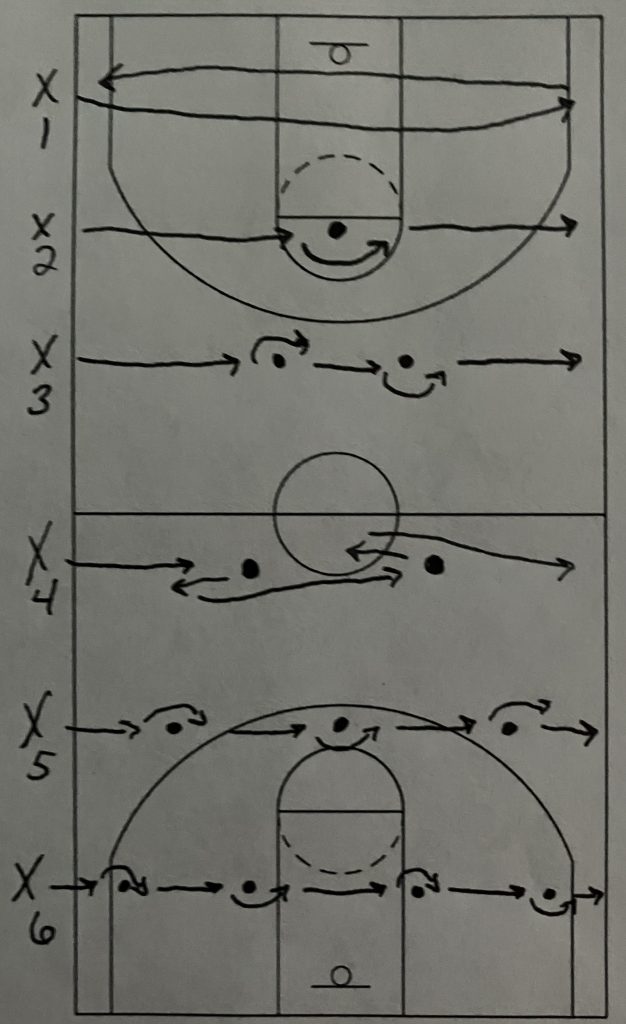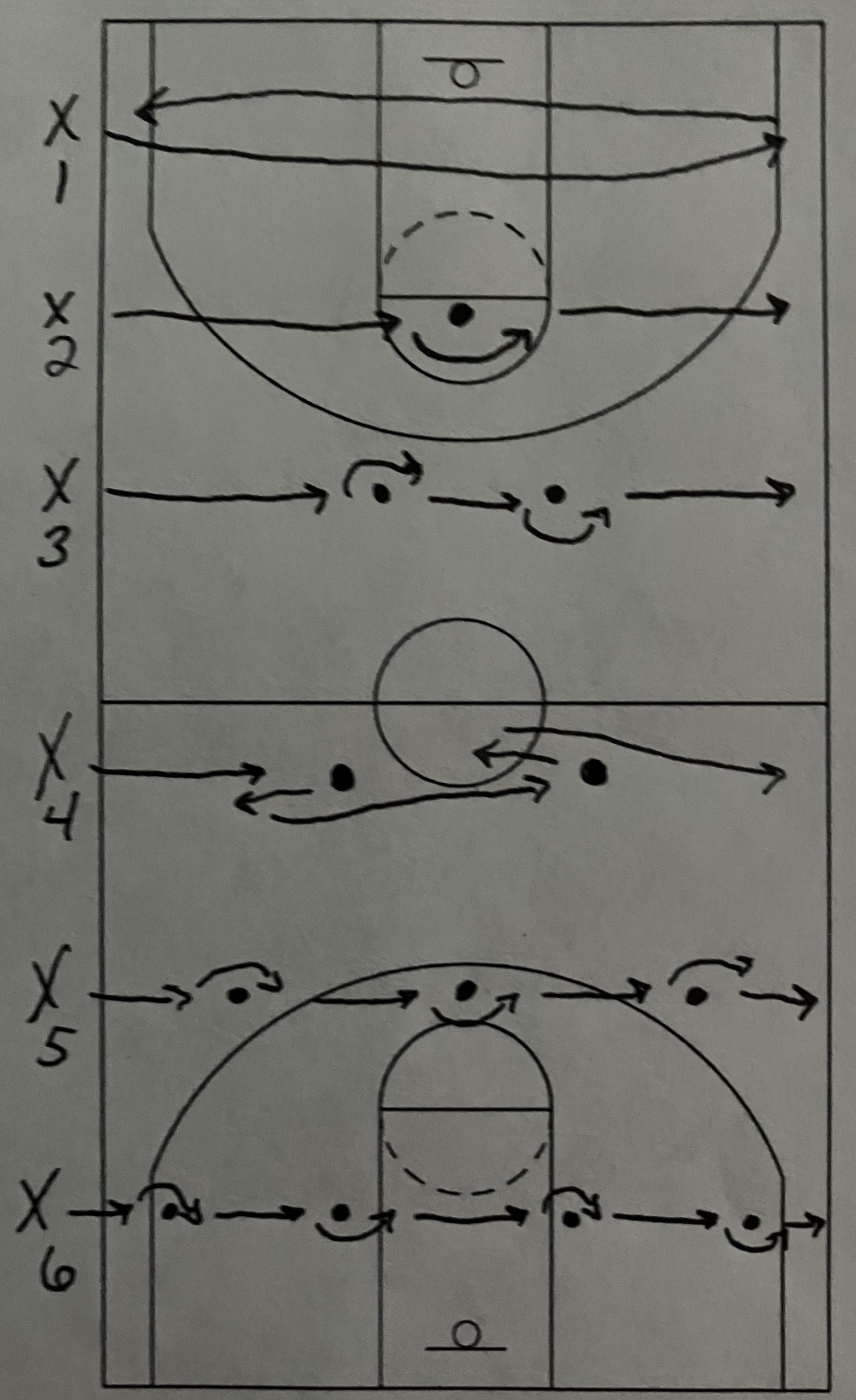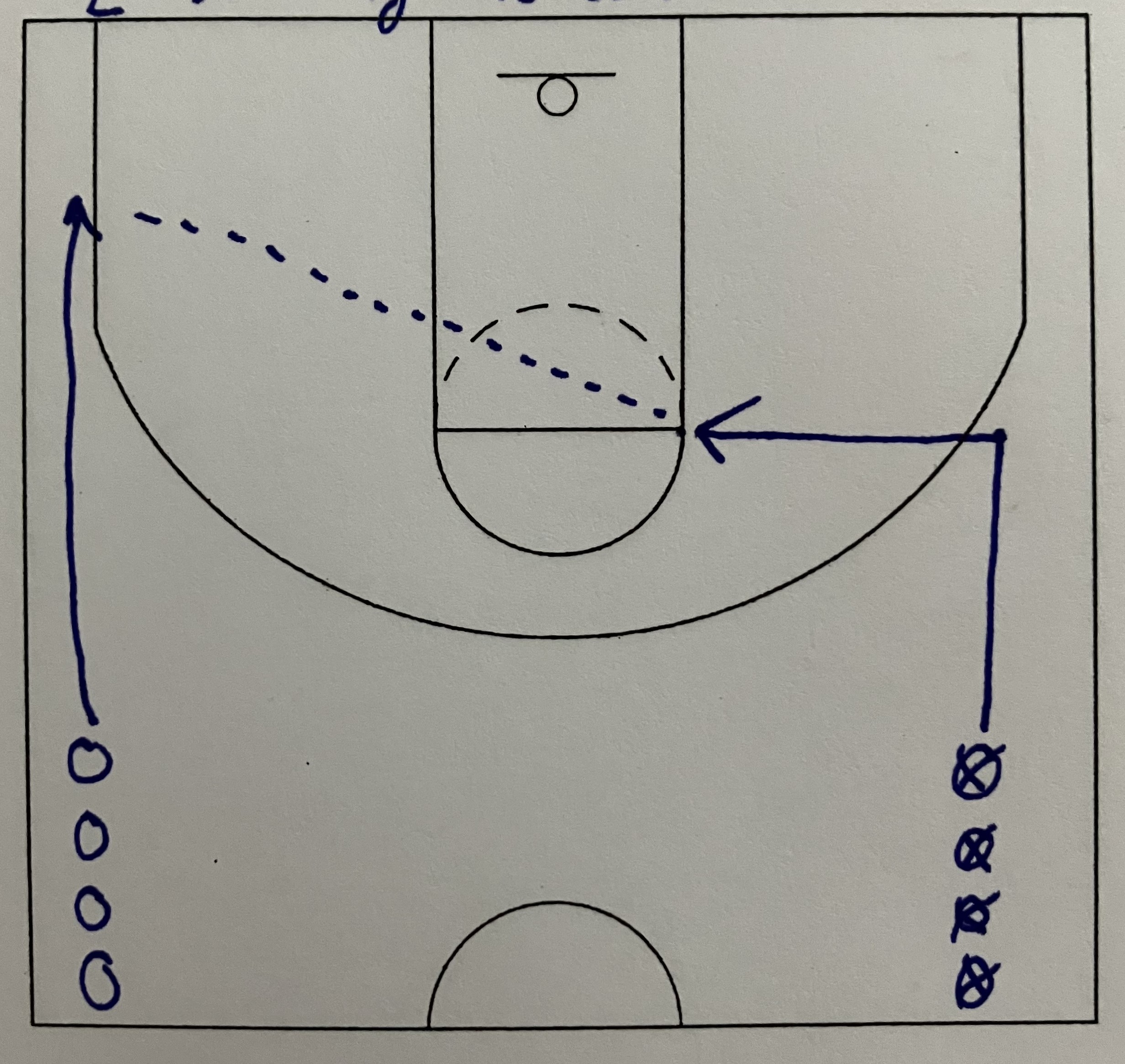During practices one of the biggest time wasters is players standing around waiting for their turn. The ability to eliminate standing will give players more time in drills which in turn should improve players’ skills. How can we as coaches decrease standing time?
Dribbling is a skill that should be worked on everyday no matter the age of the player. With a team of 10-12 players, it is impossible to line them up across the baseline and have them all dribbling at the same time. So, instead of using the baseline, why would we not put them on the sideline and use the width of the court rather than the length? The sideline is long enough to put every player on a team of 10-12 players up working in the drill without anybody standing around waiting.
The drill can also work on various aspects of dribbling to keep the players engaged without just simple repetition. By constantly changing minor details of the drill, the players must maintain focus on listening to the coach to know when the drill is changing. I am going to explain about 7 different variations I use during the drill. These can be used as a single drill or multiple variations can be used during a practice.
The first variation is doing stationary ball handling with the players standing on the sideline. There are all kinds of different stationary ball handling drills. This can be as easy as doing dribbles with just the right or left hand. It can be doing change of direction dribbles like a crossover. Any dribbling that can be done without moving can be used while the players are just standing on the sideline.

1st Drill-X1
Players can start on the sideline doing some type of stationary ball handling. On the go, the players will dribble across the floor and back. This will be just a standard right-handed or left-handed dribble. This can also be a speed dribble for teams that like to get out in transition. Players can try and dribble across the floor in as few dribbles as possible.
2nd Drill-X2
Drill 2 has the same setup as before but with a cone in the middle of the floor. The players will dribble to the cone and use a change of direction to go around the cone to the other side of the floor. The players will then turn and repeat the steps to return to the starting point. All of the change of direction dribbles can be used. Those are crossovers, behind the back, between the legs and spin moves.
With younger players or less skilled players, this is the spot I would start using to have them practicing those change of direction dribbles. It will also help to teach how to sprint to the cone, slow down to change directions with the dribble and then sprint out of the move to the other sideline.
3rd Drill-X3
From here on, the drills are increasing the number of cones being added to the drill. This makes the players change tempo more often and reduces the space they have to execute the dribbles.
Now two cones are set up right around the lane lines. The players will dribble to the 1st cone and dribble around the cone with a change of direction dribble. The player will then continue to the 2nd cone and repeat. The player finishes by dribbling all the way across the floor. Once on the other side, the player can turn around and do the same thing coming back to the starting point.
The two cones can have the players practice multiple change of direction dribbles. For instance, they can do a crossover at the 1st cone and a between the legs at the 2nd. The ability to mix up the different dribbles will have the players improving their ball handling so they are more comfortable using all of the dribbles in a game.
4th Drill-X4
I am always looking at using a back dribble in practice as much as possible. The back dribble helps players get out of bad situations more than anything else. Two cones are placed just like before. The player dribbles to the first cone. Now instead of going around the cone, the player will stop and take a back dribble. On the back dribble the player is trying to create as much space as possible between them and the cone.
After the back dribble, the player will use a change of direction dribble and go around the 1st cone. They will sprint dribble to the 2nd cone and repeat with the back dribble. This setup has the players using both hands to back dribble in the same trip across the floor. A lot of players are good dribbling with their strong hand but struggle with their off hand. This will force players to use both hands during the drill
5th Drill-X5
These last two drills are adding in additional cones. This increases the number of change of direction dribbles while forcing players to control their body and speed in closer spaces. The 5th drill is using 3 cones. The players will dribble to each cone, use a change of direction dribble, and go around the cone to the next one.
The players may only get one or two dribbles between each cone, so those dribbles should be explosive dribbles covering as much ground as possible. They should be fast to the cone, slow around the cone, and then fast after the cone. Players need to use changes of speed to help create space between them and their defender.
6th Drill-X6
The drill is adding another cone for 4 cones all together. This forces the players to stay tight to the cones on each change of direction dribble. If the players go wide around the cones, then they will have a hard time getting back in front of the next cone. The players will need to keep the dribbles close to them to go through the cones with any kind of efficiency. The key to going through the four cones is footwork and body control. Players without them will struggle to get through the cones quickly.
Conclusion
This is a great drill at the beginning of practice to get the players loose and moving. The difficulty can be increased or decreased to make it more or less challenging for each individual player. The first couple of drills can be used with younger players while the last couple can be used for older players. So, 3rd and 4th grades may stay with drills 1-3 while high school players may be doing drills 4-6.
With older players, double and triple moves can be added to the drill as well. The drill’s movement will all be the same but now the players will do two or three change of direction dribbles at each cone. Players will learn to be more comfortable with the ball once they start doing double and triple moves. This comfort shows up in games with reduced turnovers. This is a simple drill with a simple concept but can have really good benefits.



4 thoughts on “Width Dribbling”